30 Amazing Benefits Of Figs For Skin, Hair And Health
Add this ancient fruit to your diet to look and feel good from within!

Image: StyleCraze Design Team
If you are here wondering about the different benefits of figs, we have got you covered. Interestingly, certain scholars feel that the forbidden fruit plucked by Eve was not an apple but a fig. The favorite fruit of Cleopatra also happens to be a fig. Well, a fruit that has been consumed for such a long time must have certain health benefits. We have done all the research to help you learn more about the key benefits of figs. Continue reading.
 Know Your Ingredient: Figs
Know Your Ingredient: FigsWhat Is It?
A juicy and sweet oval or pear-shaped fruit (superfood) from the Mulberry family that comes in many colors.
What Are Its Benefits?
It may improve digestion. blood sugar levels, heart and bone health, and serotonin levels in the brain. It also has antioxidant properties.
Who Can Consume It?
People who have digestive health issues, heart diseases, anemia, bone health issues, hypertension, and poor immunity.
How Often?
You can have 2-3 figs per day.
Caution
Excess consumption can cause allergic reactions, diarrhea, and vomiting. People with sensitive skin should avoid it. Unripe figs must not be consumed.
In This Article
What Are Figs?
Figs are fruits that grow on the Ficus tree, a member of the Mulberry family or Moraceae
. They belong to the genus Ficus, and their scientific name is Ficus carica.
Figs are known by various names in local languages. They are called ‘Anjeer‘ in Hindi, ‘Athi Pallu‘ in Telugu, ‘Atti Pazham‘ in Tamil and Malayalam, ‘Anjura‘ in Kannada, and ‘Dumoor‘ in Bengali.
The fig tree is deciduous and can grow to a height of 7-10 meters. It has a smooth white bark. The fig trees grow wild in dry and sunny areas that have fresh and deep soil. They also tend to grow in rocky areas and can sustain even in less fertile soil.
 Did You Know?
Did You Know?The fig trees can live up to 100 years and have long and twisty branches that can surpass the height of the tree.
Figs are native to the Middle East and Western Asia and are now cultivated throughout the world. Fig trees have been naturalized in various locations of Asia and North America.
The figs are a culmination of many single seeded fruits and grow to a size of 3-5 centimeters. They are green while growing and turn either purple or brown once they ripen.
Botanically, the fig cannot be called a fruit. It is a syconium, which means a part of the stem extends into a sac, with the flowers growing internally.
Figs have a unique taste and texture. They are sweet and chewy. The smoothness of the fruit and the crunchiness of its seeds make a beautiful combination to eat. Dried figs are available throughout the year whereas fresh figs are available from June to September.
Figs are oval or pear-shaped and come in white, green, red, yellow, purple, and black colors. You can eat them raw and fresh, dried, or incorporate them in various recipes (a few of which are mentioned in this article).
Figs are considered exotic in many parts of the world. They are sweet and juicy after ripening, and their flavor depends on their color.
A simple fruit but so much to know and learn about it. Isn’t it? Let’s make it more interesting by going back in time and finding out the origin and history of figs.
Key Takeaways
- Figs are high in dietary fiber which may improve your digestion.
- The antioxidants present in figs may reduce the risk of chronic diseases and cancer.
- You can include figs in your salads, sandwiches, and desserts.
- Dip the knife in warm water to prevent it from sticking to the figs.
- Figs contain vitamin K which may interact with blood-thinning medications.
History Of Figs
The name ‘fig’ originates from a Latin word called ‘ficus’ and an older Hebrew name called ‘feg.’ Figs are known to be the first fruits to be harvested and cultivated. They were native to India and Turkey and came to America in the 1500s.
Neolithic excavations of fig remnants were discovered that dated back to 5000 B.C. They are even mentioned in the Bible as a sign of peace and prosperity.
Figs were widely cultivated in the Middle East and Europe and reached China in the mid-1500s. The world renowned fig orchards in California were planted by Spanish missionaries in the late 19th century.
Figs were used as sweeteners by the Assyrians in 3000 B.C. The fig plant is known to be the first plant to be cultivated by humans.
 Did You Know?
Did You Know?Aristotle described fig cultivation in Greece in his works. Figs were also a common source of food for the Romans. The Greeks and Romans spread the fruit in the Mediterranean region.
Those were some interesting tidbits of fig history, my friend. Now, let’s get to learn about the wide variety of figs.
Types Of Figs
There are five common varieties of figs. Each type differs subtly in flavor and sweetness. They are:
1.Black Mission – Black Mission figs are blackish-purple outside and pink inside. They are incredibly sweet and even ooze out the syrup. They are perfect to eat as a dessert or mix in cake or cookie recipes to increase the flavor.
2.Kadota – Kadotas are green with purple flesh. They are the least sweet among all the varieties of figs. They are excellent to eat raw and also taste good if heated with a pinch of salt.
3.Calimyrna – Calimyrna figs are greenish-yellow on the outside and amber on the inside. They are larger when compared to other types of figs and have a unique and strong nut flavor.
4.Brown Turkey – The Brown Turkey figs have purple skin and red flesh. Their flavor is mild and less sweet than the other types of figs. They work well in salads.
5. Adriatic – Adriatic figs have light green skin and are pink on the inside. These figs are often used to make fig bars. They are also called white figs as they are very light colored. They are extremely sweet and can be enjoyed as a simple fruit dessert.
We have learned quite a bit about figs. It’s time to answer the next big question — are figs good for you? Gear up! Here we go.
Are Figs Good For You?
Figs are perfect for you. They are rich in fiber and many essential minerals such as magnesium, manganese, calcium, copper, potassium, and vitamins K and B6. So much good in one fruit!
Let me tell you something more amazing. The nutritional value of dried figs is more than that of fresh figs. A single dried fig is as good as eating an egg. Figs, whether fresh or dried, are rich in powerful antioxidants, phytochemicalsi Natural compounds in plants that, while not essential nutrients, may offer health benefits such as antioxidant effects and chronic disease prevention. like flavonoidsi Naturally occurring substances found in plants that have anti-inflammatory and anti-cancer effects in addition to acting as antioxidants. , and polyphenolsi Natural substances with anti-inflammatory and antioxidant qualities and are often present in plant-based foods and beverages .
Figs form a major component of traditional medicine, and they are used dried, in the paste form, or grounded to counter various diseases and problems.
Eva De Angelis, a clinical dietitian and nutritionist says, “Figs are somewhat underappreciated fruits with a lot to offer. Despite having more natural sugar than other fruits, fresh figs are low-calorie natural snacks that are high in fiber and vitamins K and B6. Although figs are relatively safe to consume, eating too many of them can cause diarrhea due to their high fiber content, and there are a few other drawbacks to consider.”
Let’s figure out the nutritional content of figs now. Okay?
The Nutrition Facts Of Figs
Figs are a powerhouse of various essential nutrients. They are rich in phytonutrients, antioxidants, and vitamins. Dried figs are highly concentrated in minerals and vitamins.
Figs are a rich source of natural sugars and soluble fiber. The nutrition chart below tells you all you need to know about figs.
| Principle | Nutrient Value | Percentage of RDA |
|---|---|---|
| Energy | 74 Kcal | 4% |
| Carbohydrates | 19.18 g | 15% |
| Protein | 0.75 g | 1.5% |
| Total Fat | 0.30 g | 1% |
| Cholesterol | 0 mg | 0% |
| Dietary Fiber | 2.9 g | 7% |
| Vitamins | ||
| Folates | 6 µg | 1.5% |
| Niacin | 0.400 mg | 2.5% |
| Pantothenic acid | 0.300 mg | 6% |
| Pyridoxine | 0.113 mg | 9% |
| Riboflavin | 0.050 mg | 4% |
| Thiamin | 0.060 | 5% |
| Vitamin A | 142 IU | 5% |
| Vitamin C | 2 mg | 3% |
| Vitamin E | 0.11 mg | 1% |
| Vitamin K | 4.7 µg | 4% |
| Electrolytes | ||
| Sodium | 1 mg | 0% |
| Potassium | 232 mg | 5% |
| Minerals | ||
| Calcium | 35 mg | 3.5% |
| Copper | 0.070 mg | 8% |
| Iron | 0.37 mg | 5% |
| Magnesium | 17 mg | 4% |
| Manganese | 0.128 mg | 5.5% |
| Selenium | 0.2 µg | |
| Zinc | 0.15 mg | 1% |
| Phyto-nutrients | ||
| Carotene-ß | 85 µg | — |
| Lutein-zeaxanthin | 9 µg | — |
And now, the most important section – fig fruit benefits. The list will take you by surprise. Be prepared.
The Health Benefits Of Figs
Fig benefits are attributed to its rich dietary fiber content.
Dietary fiber helps boost digestion and control blood sugar levels. Figs are also packed with antioxidants that help reduce oxidative stress and delay early signs of aging.
1. Enhance Digestive Health

Figs relieve constipation and improve the overall digestive health. Soak 2-3 figs in water overnight and consume them with honey the next morning, and you can bid goodbye to your constipation woes.
Fiber is great for digestion, and figs are loaded with dietary fiber, which aids healthy bowel movement and relieves constipation (1). It adds bulk to the stools and promotes their smooth passage through the body. The fiber in figs also treats diarrhea and soothes the entire digestive system.
A high fiber diet is what you need to set your digestive system right, and figs are a must-have as they make you feel full and stop you from overeating (2). This helps in your weight management.
2. Improve Heart Health
Figs reduce the triglyceride levels in your blood and contribute to improving your heart health (3).
Triglycerides are fat particles in the blood that are a leading cause of heart diseases. Also, the antioxidants in figs get rid of the free radicals in the body, which block the coronary arteries and cause coronary heart disease (4).
Figs also contain phenols and omega-3 and omega-6 fatty acids that decrease the risk of heart disease.
3. Lower Cholesterol
Figs contain pectin, a soluble fiber that is known to reduce cholesterol levels (5). The fiber in figs clears the excess cholesterol in your digestive system and carries it to the bowels to eliminate it.
Figs also contain vitamin B6 that is responsible for producing serotonin. This serotonin boosts your mood and lowers cholesterol.
Dry figs reduce the overall cholesterol as they contain omega-3 and omega-6 fatty acids and phytosterolsi Compounds from plants that resemble cholesterol in structure and are present in foods such as vegetable oils, nuts, and seeds. that decrease the natural cholesterol synthesis in the body.
4. Prevent Colon Cancer
Regular consumption of figs can lower the risk of colon cancer (6). The fiber in figs helps to eliminate the waste in the body quickly, which works well for colon cancer prevention.
The numerous seeds in figs contain high levels of mucin that collects wastes and mucus in the colon and flushes them out.
5. Manage Anemia

Lack of iron in the body can cause iron-deficiency anemia. Dried figs contain iron, which is a key component of hemoglobin. Consuming dried figs was found to improve the hemoglobin levels in the blood (7).
Growing children, adolescents, and menstruating and pregnant women specifically should monitor their iron levels to avoid complications. Also, if you are ill or have undergone surgery, include figs in your diet to increase the iron levels in your body and deal with the problem efficiently (7).
Tikuli, a health-conscious blogger, recounts how figs helped in her wellness journey. She writes, “I am anemic most of the time and eating two sun dried figs, that are soaked in a little water, first thing in the morning helped me regain my hemoglobin and iron levels to some extent. I drink the water in which the figs are soaked. In some ways figs are even better than dates nutritionally (i).”
6. Lower Sugar Levels In Diabetic Patients
Not just the fruit, but the leaves also have benefits for your health. Fig leaves have amazing properties that help regulate your blood glucose levels. According to a study, including fig leaves in the diet helped control the rise in blood sugar post a meal in insulin-dependent diabetics (8).
You can consume fig leaves in the form of tea. You can boil 4-5 fig leaves in filtered water and drink this as tea. You can also dry fig leaves and grind them to obtain a powder. Add two tablespoons of this powder to a liter of water and boil it. Voila! Your tea is ready!
7. Prevent Breast Cancer
Figs are amongst those fruits that contain the highest amount of fiber. And it was found that women who consumed more dietary fiber during adolescence and early adulthood were at a lesser risk of falling prey to breast cancer (9).
High intake of fiber was associated with 16% lower risk of overall breast cancer and 24% lower risk of breast cancer before the onset of menopause (10).
Fig extracts and dried figs are known to contain elements that help in preventing postmenopausal breast cancer.
8. Strengthen Bones
Figs contain calcium, potassium, and magnesium (11). These minerals aid bone health. Figs improve bone density and decrease the breakdown of bones, which begins as you age. Calcium is crucial to maintaining healthy bones and figs are one of the best sources of it (12).
Figs contain potassium that counteracts the increased urinary calcium loss caused by high-salt diets (13). This prevents your bones from thinning out.
9. Rich In Antioxidants
Figs are a powerhouse of antioxidants, and they neutralize the free radicals in your body and fight diseases. The riper a fig is, the more antioxidants it contains.
Figs are a rich source of phenolic antioxidants. The antioxidants in figs enrich the lipoproteins in plasma and shield them from further oxidation (14).
10. Regulate High Blood Pressure

Studies show that including figs in your daily diet helps to lower blood pressure (1). The fiber in figs lowers the risk of high blood pressure whereas the potassium content of figs helps maintain it (14).
Apart from potassium, the omega-3s and omega-6s in figs also help in maintaining blood pressure (15).
11. Prevent Hypertension
When you consume less of potassium and more of sodium, it disturbs the sodium-potassium balance in your body, paving the way for hypertensioni High blood pressure; blood pressure over 140/90 that indicates that the blood exerts too much force on the artery walls. (16). Figs help restore this balance as they are rich in potassium.
12. Increase Sexual Stamina
Figs are considered to be a great fertility and sexual supplement. They are rich in calcium, iron, potassium, and zinc. They are also rich in magnesium, the mineral that is required to produce the sex hormones androgen and estrogen (17).
Figs help with various types of sexual dysfunction like sterility, erectile dysfunction, and sexual appetite. There is no strong scientific backup, but in many cultures, figs are considered as symbols of fertility. They also produce an amino acid that is responsible for increasing the production of nitric oxide, which expands the blood vessels and increases blood flow to all parts of the body, including the sexual organs.
Soak figs in milk overnight and eat them the next day to enhance your sexual abilities.
13. Treat Asthma
An efficient method to deal with bronchial asthma is to consume a mixture of powdered fenugreek seeds, honey, and figs. You can also consume fig juice to obtain relief from asthma.
Figs moisturize the mucous membrane and drain the phlegm, thereby relieving asthma symptoms. They also contain phytochemical compounds that fight the free radicals, which otherwise trigger asthma.
14. Prevent Venereal Disease
The consumption or application of fig extracts is known to provide relief from sexually transmitted diseases in many cultures. Figs are known to have been used as a calming balm for venereal diseases.
15. Reduce Throat Pain

Figs contain high mucilage that heals and protects against sore throat. These fruits are soothing to the throat, and their natural juices relieve pain and stress in the vocal chords.
Also, figs are a natural cure for tonsillitisi An infection that causes the two elliptical tissues (tonsils) in the back of the throat to become inflamed. . They help in reducing the swelling and irritation caused due to the condition. Make a paste of the figs with warm water and apply it on your throat. It will reduce pain and soothe your throat.
16. Prevent Macular Degeneration
Figs can help prevent macular degenerationi An eye condition caused by a damaged macula affecting central vision, making it challenging to carry out daily tasks. , which is a leading cause of vision loss in older people.
Figs enhance your vision and prevent macular degeneration as they contain a high amount of vitamin A (18). Vitamin A is an antioxidant that improves eye health. It protects the eyes from free radicals and prevents retinal damage (19).
17. Improve Liver Health
Figs clear obstructions in the liver, thereby enhancing its health. A study showed that an extract prepared from fig leaves exhibited hepatoprotective activity in mice, paving the way for its use in preventing hepatic damage in humans (20).
18. Effective Natural Laxative
Figs, due to their high fiber content, act as a natural laxative. They make your stool softer, enabling easy digestion (21). Figs make for great ingredients in laxative syrups.
19. Treat Piles
Dry figs are the best to treat piles. They soften the stools, reducing the pressure on the rectum. Consume them twice a day by soaking three to four figs in water. You can also drink the water in which they are soaked. The seeds in the figs are the active agents that fight the piles (18).
Soak the figs in a glass of water for about 12 hours before consuming them. Eat them once in the morning and then in the night. It works best when you begin your day by eating figs and end it with the same.
20. Prevent Coronary Heart Disease

The antioxidants in figs, as well as their blood pressure lowering properties, eliminate the free radicals in the body, which otherwise block the coronary arteries, leading to coronary heart disease (22).
Also, the presence of potassium, omega-3s, and omega-6s in figs help in preventing heart attacks (23).
21. A Good Source Of Energy
Adding figs to your diet is a sure shot way to increase your energy levels. The carbohydrates and sugar present in figs increase the percentage of energy in your body (24).
22. Keep Insomnia At Bay
A balanced diet is essential for good sleep. Including figs in your diet enhances the quality of your sleep. They contain the amino acid tryptophan that helps your body create melatonin, which induces sleep (25).
Figs also contain omega-3 fatty acids that help you to sleep better. The tryptophan present in figs helps in synthesizing vitamin B3 in your body, which may keep insomnia at bay (26), (27). Lack of vitamin B3 in your body makes you unstable and restless, which can spoil your sleep. However, there is not enough research to prove this claim about figs.
Figs are a rich source of magnesium. Lack of magnesium in the body causes stress and irritability, which lead to insomnia (28).
23. Boost The Immune System
Figs kill bacteria, viruses, and roundworms in your body, which can otherwise cause health issues. They contain nutrients like potassium and manganese that, along with the antioxidants, boost your immune system.
24. May Aid In Weight Management
As mentioned earlier, figs are rich in fiber and may help you feel satiated. This may prevent you from overeating and aid in weight loss and management. As per animal research, when consumed in high doses, figs seemed to help with weight loss in a similar manner as the control drug for weight loss. Similarly, fig leaf extract also helped rats lose weight. Another human study found that eating about 120g of figs per day for five weeks replaced other foods like desserts in people’s diets. This is how it helped with weight loss and management. However, more human studies are needed to determine whether figs affect weight or feelings of fullness in humans (1).
Aren’t these health benefits of fig incredible? Now, let us check out how fig benefits the skin.
Benefits of Figs For Skin
25. Prevent Wrinkles

A study found that fig extract had an antioxidative and anti collagenase effect on wrinkled skin and reduced the percentage of wrinkle depth (29).
In another study, it was found that a formulation containing fig fruit extract decreased skin melanin, trans-epidermal water loss, and skin sebum significantly. It also increased skin hydration. Hence, figs could be used as a remedy for hyperpigmentation, acne, freckles, and wrinkles (30).
26. Rejuvenate Your Skin
Figs are great for your skin. Whether you eat them or apply them as a mask, they make your skin beautiful. Here’s a recipe for a mask.
Take one large fig or two small figs. Cut the fig in half and scoop out its flesh and mash it thoroughly. Add a teaspoon of honey or yogurt to it if you want to enhance the texture of your skin.
Apply the mask on your face and keep it on for 5 minutes. Wash it off with water and say hello to refreshed skin.
27. Cure Boils And Warts
You can apply a fig directly on the skin to bring down various forms of skin inflammation like boils and abscess. A study found that the latex of the fig tree exhibited antiwart activity. This could be due to the proteolytic activity of the latex enzymes (31).
28. Make Your Skin Soft And Supple
Figs contain a high amount of vitamin C, a powerful antioxidant that helps to lighten and even out the skin tone. Blend five figs to get a smooth paste. Add a teaspoon each of powdered oatmeal and milk and half a teaspoon of dried ginger powder to it. Mix well to form a smooth paste. Use this face pack twice a week to get soft and smooth skin.
Figs are all you need for healthy and glowing skin. But what about your har? Scroll down to check out Figs benefits for hair.
Benefits of Figs For Hair
29. Condition Hair

Figs are very popular in the hair care industry as their extracts are used to create amazing hair conditioners. These extracts provide moisture to the scalp and help in the detangling of hair. They moisturize the hair without making it heavy or weighed down.
30. Promote Hair Growth
Hair loss usually occurs due to lack of proper nourishment. Figs contain hair-friendly nutrients like magnesium, vitamin C, and vitamin E which promote hair growth. The essential nutrients present in this fruit stimulate blood circulation in the scalp to accelerate hair growth.
So, those were the benefits of figs. Now, let’s look at a few recipes.
Fig Recipes To Try
1. Fig Jam
What You Need
- 2 pounds large figs, cut into 1/2-inch pieces
- 1/2 cup of water
- 1 1/2 cups of sugar
- 1/4 cup of fresh lemon juice
Directions
- Toss the fig pieces with sugar in a pan and stir for about 15 minutes. Wait till the sugar gets dissolved, and the figs become juicy.
- Add the lemon juice and water to it and boil. Stir until the sugar dissolves completely.
- Simmer the mixture over moderate heat until it becomes soft and gooey and attains a jam-like texture.
- This process will take about 20 minutes.
- Transfer the jam to jars and let them cool at room temperature with the lids on. Keep the jars in a refrigerator and store for a couple of months.
2. Fig Cake
What You Need
- 3 cups chopped fresh figs
- 1 egg
- 2 cups of all-purpose flour
- 1 cup of fat-free milk
- 1 cup of white sugar
- 1/4 cup of water
- 1 tablespoon of lemon juice
- 2 teaspoons of baking powder
- 1 teaspoon of vanilla extract
- 1/2 teaspoon of salt
- 1/4 cup of brown sugar
- 1/4 cup of butter
- 1/4 teaspoon of almond extract
Directions
- Take a bowl and mix the all-purpose flour, salt, and baking powder in it and keep it aside.
- Preheat your oven to 175o C.
- Take cake pans and spray vegetable oil on them.
- Take another bowl and mix butter and sugar in it until the mixture turns fluffy.
- Add eggs to it and beat well.
- Add flour and milk to it.
- Add vanilla essence, almond extract, and a cup of chopped figs to the bowl.
- Pour this mixture into the pans and bake in the oven till you see the cake puffing.
- Place a toothpick in the batter and bake till the toothpick comes out. This will take about 30 minutes. Take the cake out and let it cool.
- To make a topping, take a pan and mix two cups of chopped figs, brown sugar, water, and lemon juice. Boil it until the paste thickens, which would take about 20 minutes. Spread the dough evenly onto the cake.
3. Sticky Cinnamon Figs
What You Need
- 8 ripe figs
- A dollop of butter
- 4 tablespoons of clear honey
- A handful of shelled pistachio nuts or chopped almonds
- 1 teaspoon of ground cinnamon
- Greek yogurt, to serve
Directions
- Heat up the grill at a medium-high setting.
- Cut a deep cross in the top of each fig.
- Open up the top of the fig by separating the sections.
- Place the figs on a baking dish and spoon a bit of butter in the center of each.
- Drizzle some honey over the figs.
- Sprinkle the nuts and cinnamon all over the figs.
- Grill them for about 5 minutes.
- Serve them warm with dollops of yogurt.
The recipes are great. But one must also know where to get these fruits from, right?
Where To Buy Figs
You can easily purchase figs from any major grocery or convenience stores. You are more likely to find dried figs in these stores. Also, if you are lucky, you will chance upon fresh figs in the fruit section. You can also procure them online.
Great. But how do you select them? And what about storage?
How To Select Figs And Store Them
Selection
Fresh figs are available from June to November while dried figs are available throughout the year. Figs should be allowed to ripen before they are picked.
- Select figs that are plump and tender.
- They should be devoid of bruises and dents and should not be mushy.
- Perfect and fresh figs emit a mildly sweet fragrance when slight pressure is applied. Smelly figs are an indication that they might be spoiled or have already begun to ferment.
- Stay away from unripe, green figs as they can burn your mouth and lips.
Storage
- Fresh figs do not have a long shelf life as they are very delicate. So, they should be stored in the refrigerator immediately after purchasing. Put them in a plastic or zip pouch or wrap them to ensure that they do not dry out or get crushed while handling.
- Slightly ripe figs should be kept at room temperature and away from direct sunlight to allow them to ripen completely.
- Since fresh figs get perished quickly, they should be consumed within 2 to 3 days.
- If you have stored figs in the refrigerator, take them out and place them in a bowl of water to enrich their taste and palatability.
- Dried figs can be stored for several months either in the refrigerator or a fresh and dry place.
- Figs can also be frozen whole, sliced, or peeled in a sealed container for more than 3 months.
- They are also available in the canned form, which comes with a shelf life of 6 months and should be consumed within a week of opening.
And yes…
Caution
You need to exercise caution while consuming figs in high amounts as they can cause allergic reactions, ranging from vomiting to diarrhea and even itchy skin.
People who have sensitive skin or a history of allergy should avoid eating or applying figs on the skin.
Never consume unripe figs. They produce white latex that contains compounds like furocoumarins and 5-methoxy psoralen (5-MOP), which can cause severe allergy around the mouth and lips that can quickly spread to the other body parts.
And if you are wondering…
How To Include Figs In Your Diet
Figs are incredibly juicy and sweet and have a chewy flesh and crunchy seeds. They are consumed in both the raw and dry forms. Fresh figs are more nutritious than their dry counterparts, so try to include more of them in your diet. Sweet and juicy figs should be enjoyed without any additions to enjoy their taste to the fullest.
Before eating or using figs, wash them under running water and gently remove the stem. You can eat fresh figs whole or peeled.
Simmer frozen figs in water to make them plumper and juicier.
Dried figs travel well, which makes them excellent snacks you can have on-the-go. They can also be used in sandwiches – you can add chopped figs and dried cranberries to chicken salad sandwiches – or leafy green salads.
Enjoy sliced fresh figs on their own or pair them with an ounce of cheese for a more decadent snack.
Puree figs and combine them with balsamic vinegar and olive oil for a healthful and flavorful homemade salad dressing.
Fresh figs are an excellent addition to salads, cakes, and ice creams.
Since figs are highly alkaline, you can mix them with other foods. It will not alter their taste in any way.
Dried figs have much higher sugar content than the fresh ones, so you can chop and add them to desserts and other sweet dishes to add a touch of sweetness.
Processed figs are used in making pies, pudding, cakes, jams, and other bakery products while dried figs are used for preparing muesli bars, porridge, and as an addition to cereals and porridges.
You can also add dried figs to soups, stews, and meat preparation to enhance the taste. The paste of figs is also used as a sugar substitute in some regions.
Also…
Some Important Tips
- Use fresh figs for best results.
- Always wash the fruits thoroughly and gently.
- When cutting or chopping, dip the knife in warm water to prevent the figs from sticking to it.
- Avoid consuming limp figs.
- If dried figs have become too hard, try soaking them in water.
- Store figs in a bag in the coldest part of the fridge.
The benefits of figs are plenty. However, they come with their own set of adverse effects too. Scroll down to explore the side effects of figs.
Side Effects Of Figs
Figs contain fructose and need to be taken in moderation.
Figs may interfere with some medication. Eva De Angeli, a clinical dietitian and nutritionist says, “Because figs are high in vitamin K, which helps with clothing, eating them may interfere with blood-thinning medications, so people taking this type of medication should limit their vitamin K intake.“
It is important to be cautious when consuming fig leaf tea that contains furanocoumarin because it has a high potential to interact with medications (32).
Figs are high in calories and eating them in abundance will not help you lose weight. So, keep a check on the number of figs you consume if you are on a diet.
And coming to the fun part…
Fun Facts About Figs
- Figs were used as training food during early Olympics. The winners were also honored with figs, making them the first Olympic medal.
- Figs made their first commercial appearance in 1892.
- Fig trees do not have any flowers. The flowers are inside the fruits. The crunchy taste of figs is due to the edible seeds produced by the flowers.
- Figs ripen and partially dry on the trees.
- Figs hold the moisture in baked goods and help keep them fresh.
- You can use fig puree to replace fat in baked goods.
- California produces 100% of America’s dried figs and 98% of fresh figs.
- Eating half a cup of figs is as good as drinking half a cup of milk.
Now, let’s answer some common queries regarding figs.
Infographic: 2 Easy DIY Fig Recipes For Hair
The topical application of fig for hair is also as beneficial as eating it. Fig has vitamin B12, vitamin A, and minerals which are beneficial for hair. They help in promoting healthy hair growth, reducing dullness, and preventing split ends by moisturizing and detangling hair.
Check out the infographic below to know some basic DIY fig recipes for your hair. Illustration: StyleCraze Design Team
The numerous benefits of figs make them ideal for a healthy diet. They are loaded with vitamins, antioxidants, and phytonutrients. Figs can promote digestive, heart, and liver health. They also reduce the risk of cancer, lower cholesterol, help in diabetes management, strengthen bones, potentially prevent macular degeneration, and boost immunity. Figs also promote hair and skin health. However, overconsumption may trigger itchy skin, diarrhea, and vomiting. Avoid consuming figs if you are allergic to them. On the other hand, consuming them in moderation can help you reap their benefits.
Frequently Asked Questions
How much of anjeer should I eat per day?
Consult your nutritionist because it differs from person to person, depending on their health and body type.
Are figs vegan?
Whether figs are vegan or not is a constant debate because in one kind of figs, dead wasps are present in the fruit. These wasps get inside for pollination.
What are the various ways of eating figs?
Oh, there are so many! Eat them fresh, dried, powdered or in a salad or dessert.
What are the benefits of figs for men?
The benefits of figs are the same for everybody. For the human males specifically, it helps in dealing with erectile dysfunction.
Is it okay to eat dry figs in summer?
Yes, absolutely! Dry figs are among the best foods to eat in summer.
Are figs a superfood?
Yes, figs are considered a superfood due to their high fiber and mineral content and the multitude of health benefits they offer.
What is the best time to eat figs?
As (dried) figs are calorie- and sugar-dense, the best time to eat them is early in the morning.
Do fresh figs raise blood sugar?
No. Fresh figs have a low glycemic index due to their high fiber content. Hence, they do not cause sudden spikes in blood sugar levels.
Is fig good for sperm?
Yes. Figs are high in antioxidants and various minerals that are said to improve sperm count and sperm motility (ability to move independently) (32).
Are figs good for arthritis?
Yes, figs may be good for arthritis as they contain lupeol, a substance with anti-inflammatory properties. Figs also contain plenty of magnesium, potassium, and antioxidants, all of which improve bone and joint health (33).
The next time you bite into a fig, simply enjoy the fruit, knowing fully well the immense good that it does for you.
Illustration: Amazing Benefits and Uses Of Figs For Skin, Hair And Health

Image: Stable Diffusion/StyleCraze Design Team
Experience the amazing health benefits of figs with a fun 15-day Just 2 Figs Daily challenge! Enjoy the natural sweetness of figs and reap the rewards of improved digestion, increased energy, and better overall health. Check out the video below for more information!
Personal Experience: Source
StyleCraze's articles are interwoven with authentic personal narratives that provide depth and resonance to our content. Below are the sources of the personal accounts referenced in this article.
i. Dried Figs, Banana And Yogurt Smoothiehttps://tikulicious.wordpress.com/2016/05/29/dried-figs-banana-and-yogurt-smoothie/
References
Articles on StyleCraze are backed by verified information from peer-reviewed and academic research papers, reputed organizations, research institutions, and medical associations to ensure accuracy and relevance. Read our editorial policy to learn more.
- Phytochemical composition and health benefits of figs (fresh and dried): a review of literature from 2000 to 2022
https://www.ncbi.nlm.nih.gov/pmc/articles/PMC10255635/ - High-fiber foods
https://medlineplus.gov/ency/patientinstructions/000193.htm - Industrial application and health prospective of fig (Ficus carica) by-products
https://www.ncbi.nlm.nih.gov/pmc/articles/PMC9919570/ - Dried fruits: excellent in vitro and in vivo antioxidants
https://pubmed.ncbi.nlm.nih.gov/15670984/ - Long-term blood cholesterol-lowering effects of a dietary fiber supplement
https://pubmed.ncbi.nlm.nih.gov/10429748/ - The effect of fig tree latex (Ficus carica) on stomach cancer line
https://www.ncbi.nlm.nih.gov/pmc/articles/PMC3371962/ - Use of dried figs to improve hemoglobin percentage
https://www.ijsr.in/upload/45691291721.pdf - Protective effects of Ficus carica leaves on glucose and lipids levels carbohydrate metabolism enzymes and β-cells in type 2 diabetic rats
https://www.ncbi.nlm.nih.gov/pmc/articles/PMC6130661/ - Dietary fiber intake in young adults and breast cancer risk
https://pubmed.ncbi.nlm.nih.gov/26908709/ - Higher dietary fiber intake in young women may reduce breast cancer risk
http://hsph.harvard.edu/news/ - Figs dried uncooked
https://fdc.nal.usda.gov/fdc-app.html#/food-details/746768/nutrients - Calcium and optimal bone health
https://www.ncbi.nlm.nih.gov/pmc/articles/PMC1479468/ - Potassium citrate prevents increased urine calcium excretion and bone resorption induced by a high sodium chloride diet
https://pubmed.ncbi.nlm.nih.gov/11994333/ - Evaluation of antihypertensive potential of Ficus carica fruit
https://www.ncbi.nlm.nih.gov/pmc/articles/PMC6130763/ - Omega-3 fatty acids lower blood pressure by directly activating large-conductance Ca2+-dependent K+ channels
https://www.ncbi.nlm.nih.gov/pmc/articles/PMC3607063/ - The imbalance of sodium and potassium intake: implications for dietetic practice
https://www.ncbi.nlm.nih.gov/pmc/articles/PMC9237821/ - Effects of dietary or supplementary micronutrients on sex hormones and IGF-1 in middle and older age: a systematic review and meta-analysis
https://www.ncbi.nlm.nih.gov/pmc/articles/PMC7284480/ - Crude edible fig (Ficus carica) leaf extract prevents diethylstilbestrol (DES)-induced DNA strand breaks in single-cell gel electrophoresis (SCGE)/comet assay: literature review and pilot study
https://www.ncbi.nlm.nih.gov/pmc/articles/PMC6897490/ - Vitamin A and carotenoids
https://ods.od.nih.gov/factsheets/VitaminA-HealthProfessional/ - Hepatoprotective effect of Ficus carica leaf extract on mice intoxicated with carbon tetrachloride
https://www.ncbi.nlm.nih.gov/pmc/articles/PMC3869579/ - Effects of Ficus carica paste on constipation induced by a high-protein feed and movement restriction in beagles
https://www.ncbi.nlm.nih.gov/pmc/articles/PMC3251757/ - Good nutrition can prevent and treat coronary artery disease
https://www.aafp.org/pubs/afp/issues/1998/0315/p1307.html - Omega-6 fatty acids and risk for cardiovascular disease
https://www.ahajournals.org/doi/10.1161/circulationaha.108.191627 - Effect of consumption of dried California mission figs on lipid concentrations
https://www.ncbi.nlm.nih.gov/pmc/articles/PMC3169356/ - Assessment of the potential role of tryptophan as the precursor of serotonin and melatonin for the aged sleep-wake cycle and immune function: Streptopelia risoria as a model
- Phenolic compounds in fresh and dried figs from Cilento (Italy) by considering Breba crop and full crop in comparison to Turkish and Greek dried figs
https://pubmed.ncbi.nlm.nih.gov/24888706/ - The impact of tryptophan supplementation on sleep quality: a systematic review meta-analysis and meta-regression
https://pubmed.ncbi.nlm.nih.gov/33942088/ - Magnesium and stress
https://www.ncbi.nlm.nih.gov/books/NBK507250/ - In vitro antioxidant collagenase inhibition and in vivo anti-wrinkle effects of combined formulation containing Punica granatum Ginkgo biloba Ficus carica and Morus alba fruits extract
https://pubmed.ncbi.nlm.nih.gov/26203268/ - Effects of Cream Containing Ficus carica L. fruit extract on skin parameters: in vivo evaluation
https://pubmed.ncbi.nlm.nih.gov/25593393/ - Comparative study of fig tree efficacy in the treatment of common warts (Verruca vulgaris) vs. cryotherapy
https://pubmed.ncbi.nlm.nih.gov/17472688/ - Efficacy and Safety of Fig (Ficus carica L.) Leaf Tea in Adults with Mild Atopic Dermatitis: A Double-Blind Randomized Placebo-Controlled Preliminary Trial
https://pmc.ncbi.nlm.nih.gov/articles/PMC9658579/ - Effects of common fig (Ficus carica) Leaf extracts on sperm parameters and testis of mice intoxicated with formaldehyde
https://www.ncbi.nlm.nih.gov/pmc/articles/PMC4745414/ - Study of the effect of an oral formulation of fig and olive on rheumatoid arthritis (RA) remission indicators: a randomized clinical trial
https://www.ncbi.nlm.nih.gov/pmc/articles/PMC5149042/
Read full bio of Mollie Meldahl
- Eva De Angelis is a Dietitian Nutrionist from Argentina. She specializes in food and nutrition education, and healthy cooking. She has a Bachelor’s degree in Human Nutrition and Dietetics from ISalud University, a postgraduate certificate in Nutrition, Gastronomy, and Health, a culinary diploma, and an intermediate-level technical degree in Food Science.
 Eva De Angelis is a Dietitian Nutrionist from Argentina. She specializes in food and nutrition education, and healthy cooking. She has a Bachelor’s degree in Human Nutrition and Dietetics from ISalud University, a postgraduate certificate in Nutrition, Gastronomy, and Health, a culinary diploma, and an intermediate-level technical degree in Food Science.
Eva De Angelis is a Dietitian Nutrionist from Argentina. She specializes in food and nutrition education, and healthy cooking. She has a Bachelor’s degree in Human Nutrition and Dietetics from ISalud University, a postgraduate certificate in Nutrition, Gastronomy, and Health, a culinary diploma, and an intermediate-level technical degree in Food Science.
Read full bio of Tanya Choudhary
Read full bio of Ravi Teja Tadimalla
Read full bio of Moksha Gandhi







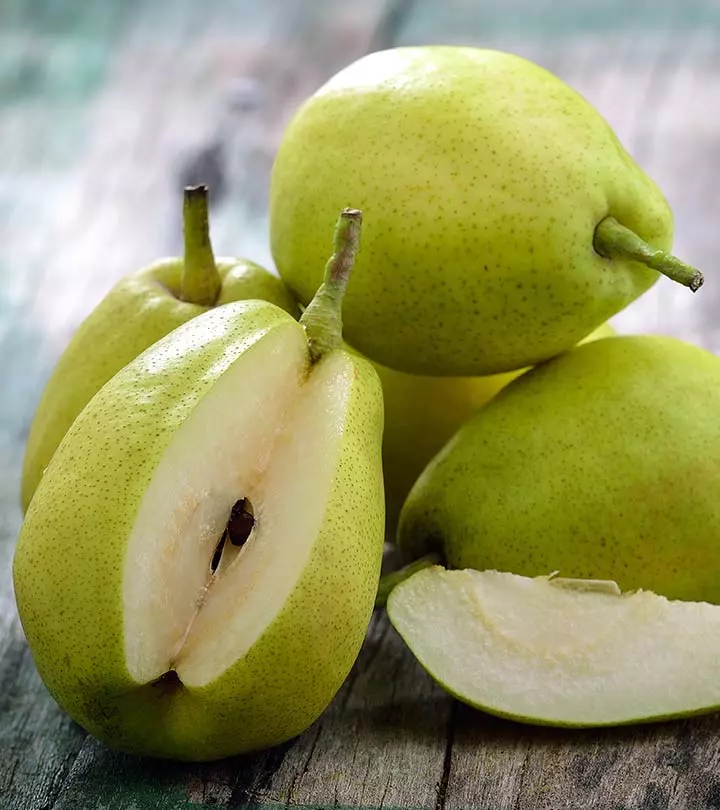
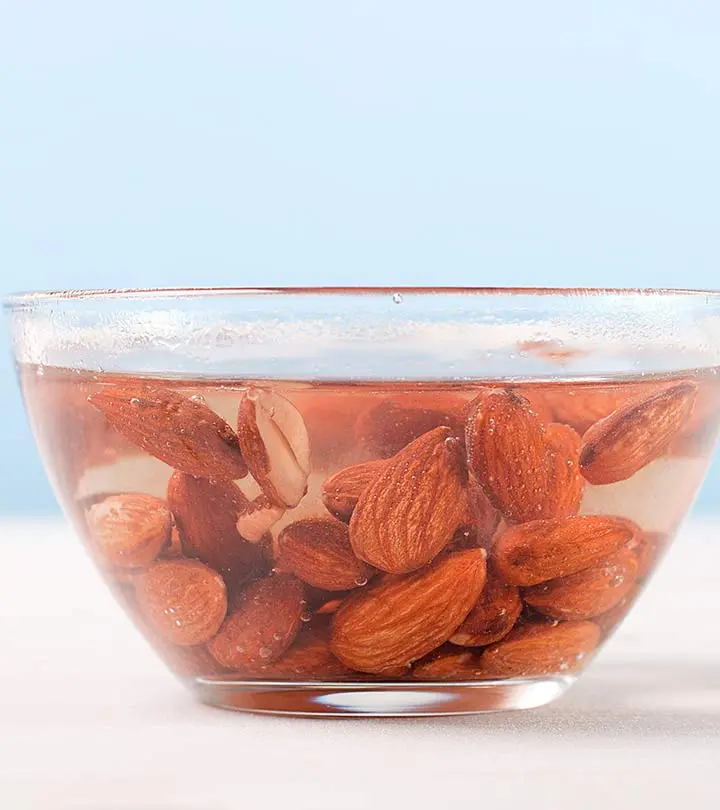

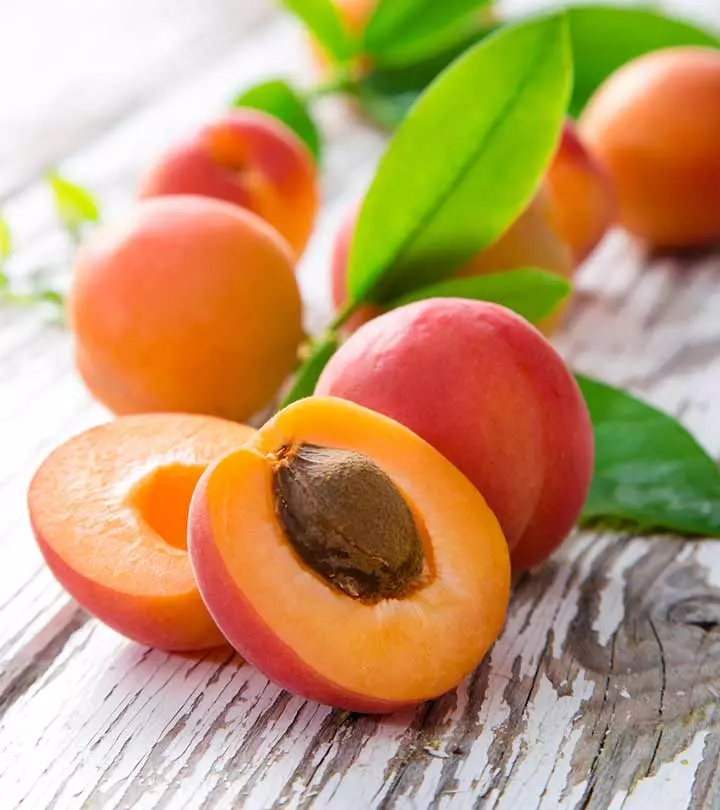


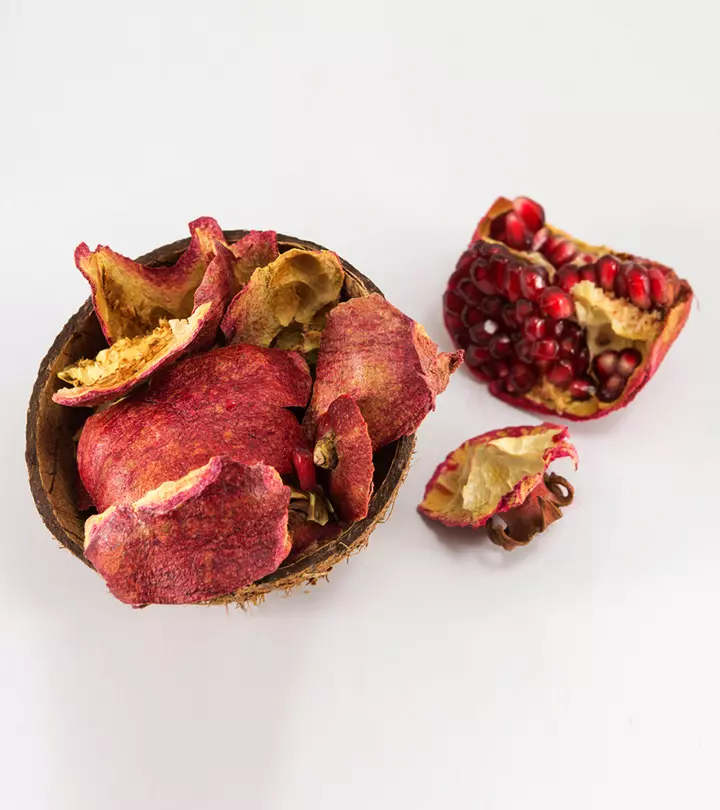
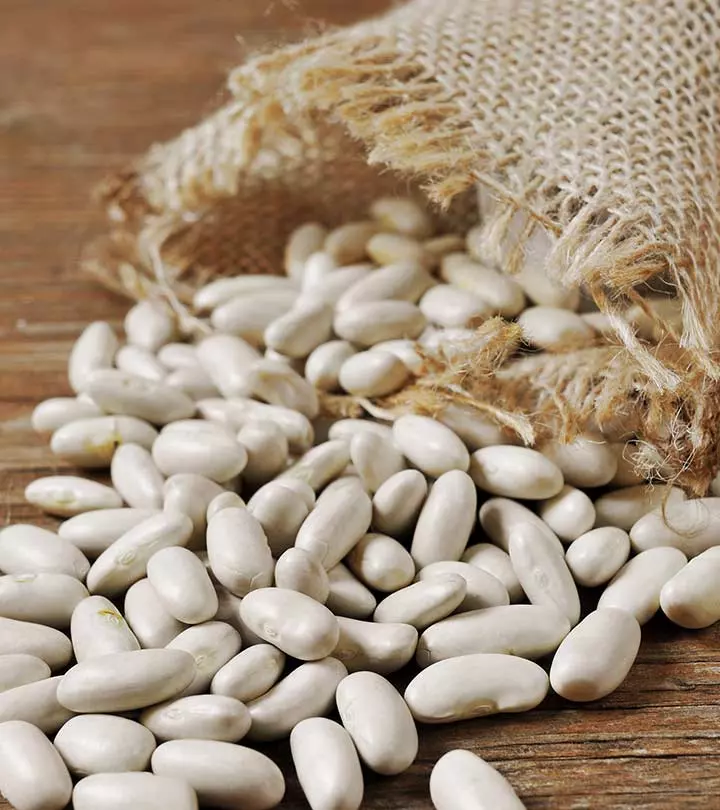


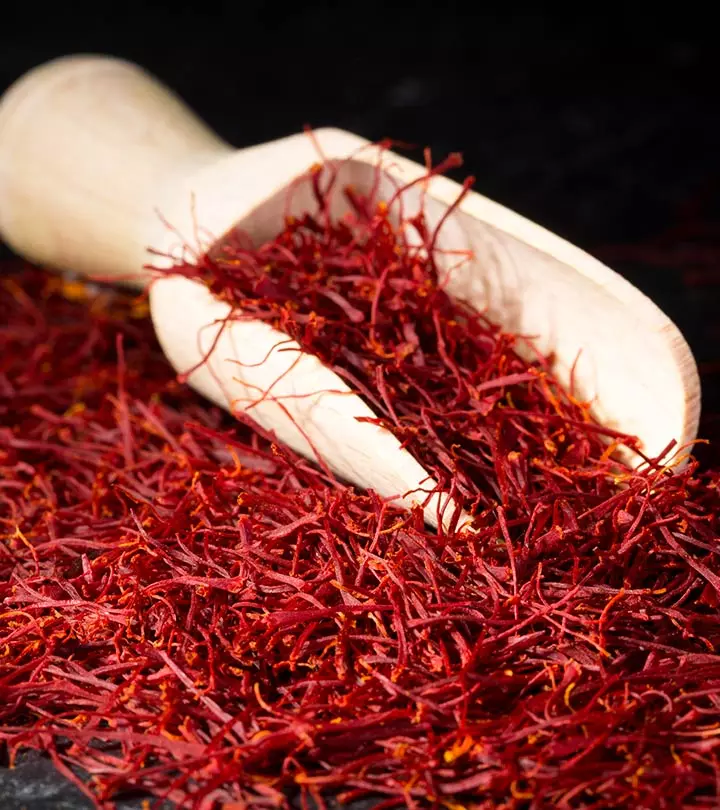
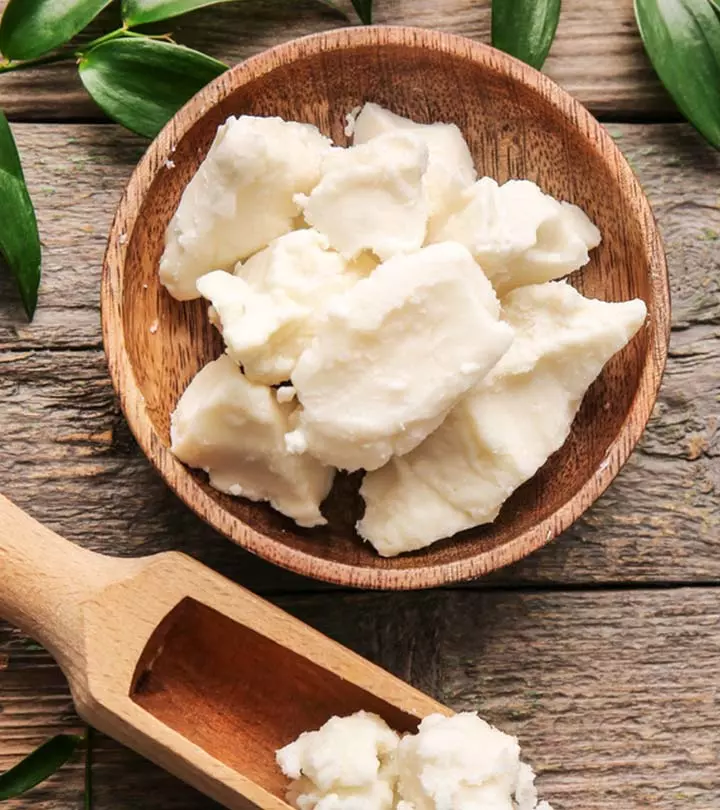
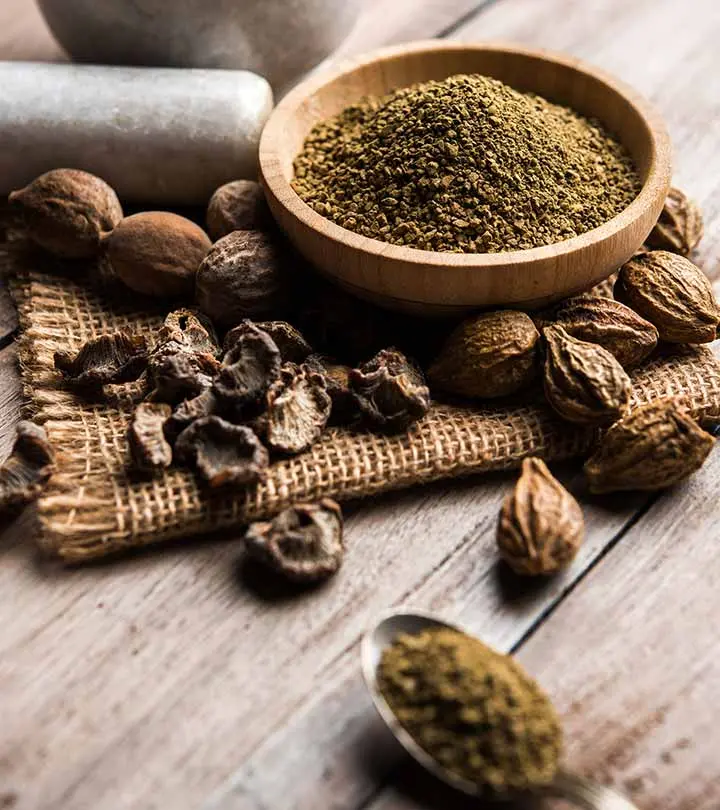


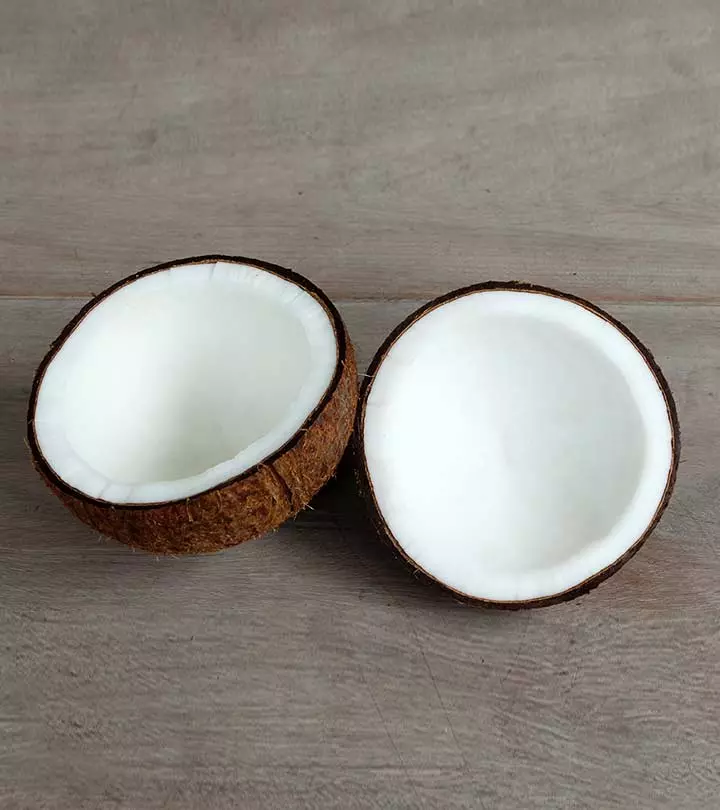
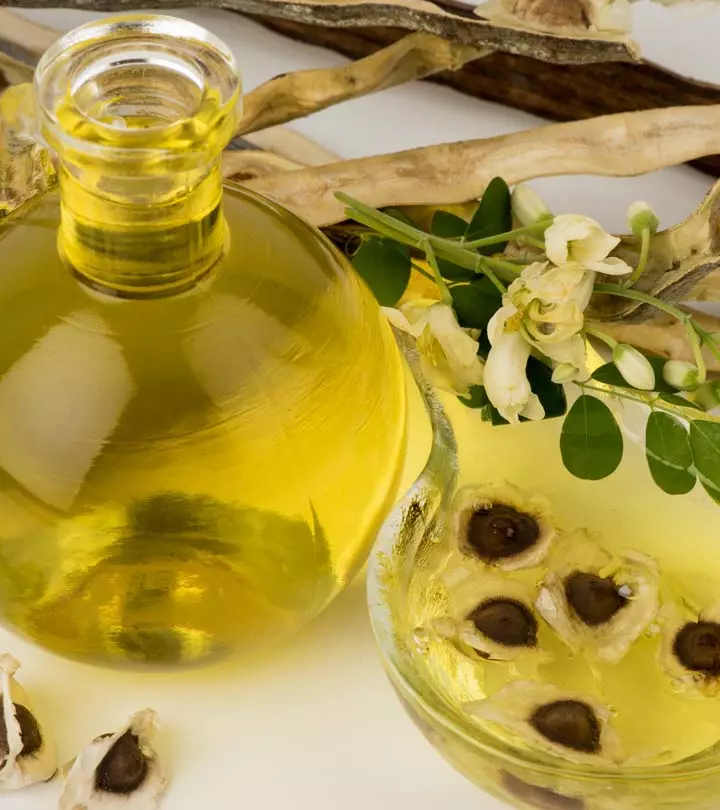
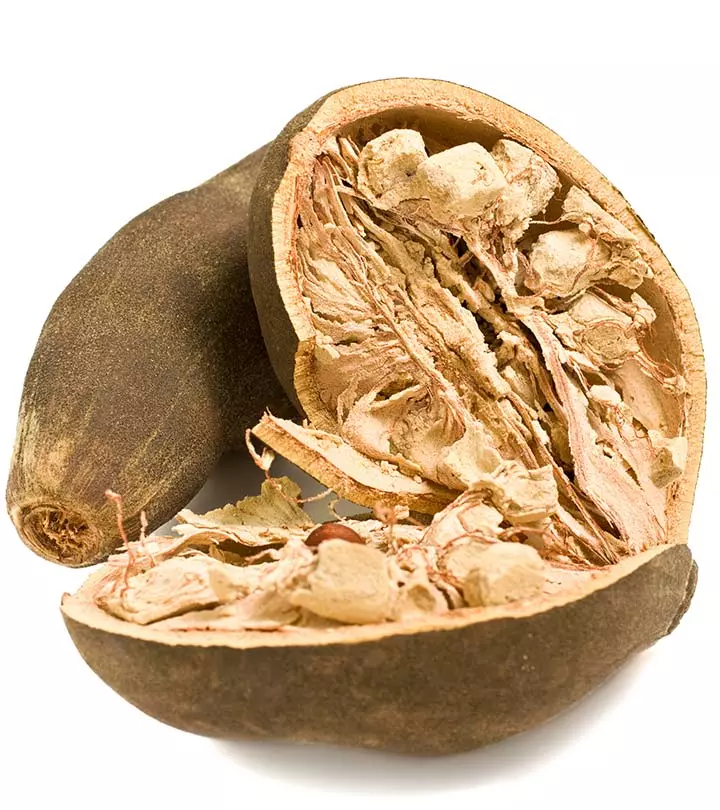
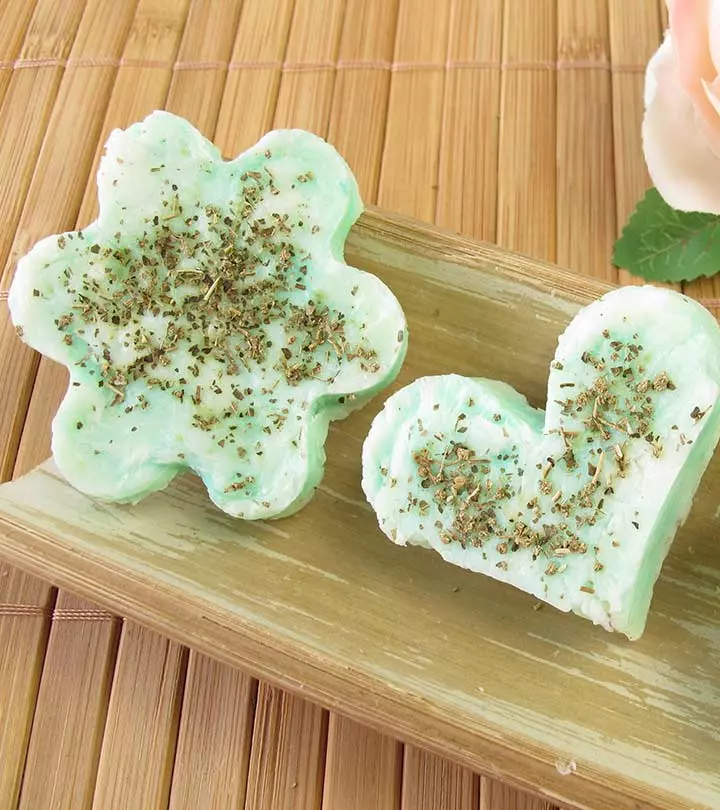
Community Experiences
Join the conversation and become a part of our empowering community! Share your stories, experiences, and insights to connect with other beauty, lifestyle, and health enthusiasts.